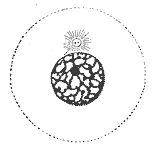Mitosis is the a process of cell division in which two new nuclei are formed, each containing the original number of chromosomes. The two newly formed nuclei are known as identical daughter cells. When mitosis occurs the chromosomes from one nucleus split into two matching sets which inhabit each daughter cell. The duplication and split of the chromosomes occurs in order for the twin daughter cells to be able to obtain information for future functions.
 |
Figure 1:
The S stage |
In order for this process to occur, each cell must undergo a repeating set of events, which occur in the beginning stages of the cell cycle also known as the interphase. The replication of genetically identical nuclei is reached through the four phases of mitosis; prophase, metaphase, anaphase and telophase. The first stage, the interphase can be further broken down into 3 stages/phases. The G1 stage, the S stage and the G2 stage. However the duplication of the DNA only occurs in the S stage. During the S phase, the DNA replicates resulting in the production of 2 copies of each chromosome, as shown in Figure 1. The cell then moves onto phase G2, where it continues to prepare for mitosis and cell division.
Mitosis, as mentioned above is a process composed of 4 stages, the first stage being prophase. During prophase the chromosomes, begin to condense or in other words thicken. The twin copies of each chromosome are called the sister chromatids. The nuclear membrane which surrounds and protects the cell nucleus disintegrates (breaks apart into pieces), the nucleolus then disappears, and the centrosomes move towards opposite poles of the cell. During the movement of the centrosomes the spindle fibers, which grow out of the centrioles, form and move to opposite poles of the cells as well. Metaphase is the second stage of mitosis. During this stage the duplicated chromosomes line up in the center of the cell. The spindle fibers are now fully grown and formed allowing them to attach itself to each sister chromatids. The third phase, anaphase occurs when the sister chromatids of each chromosome begin to divide. The centromeres which have moved to opposite poles of the cell, and hold the sister chromatids together, split resulting in the chromosomes moving away from each other along the attached spindle fibers. The last phase, telophase is the phase in which the two groups of chromosomes reach opposite ends of the cell. The nuclear membrane as well as the nucleus begin to form around each group while the spindle fibers detach themselves from the chromosomes.
Post the process of mitosis, the last and final stage of the cycle occurs. This stage is called the cytokinesis and it is the stage in which the cell along with the cytoplasm split and divide into two identical daughter cells. Each daughter cell is made up of its nucleus which is a replica of the genetic material from the ‘’parent cell’’.
 |
Figure 2
Visual representation of the stages of mitosis |







